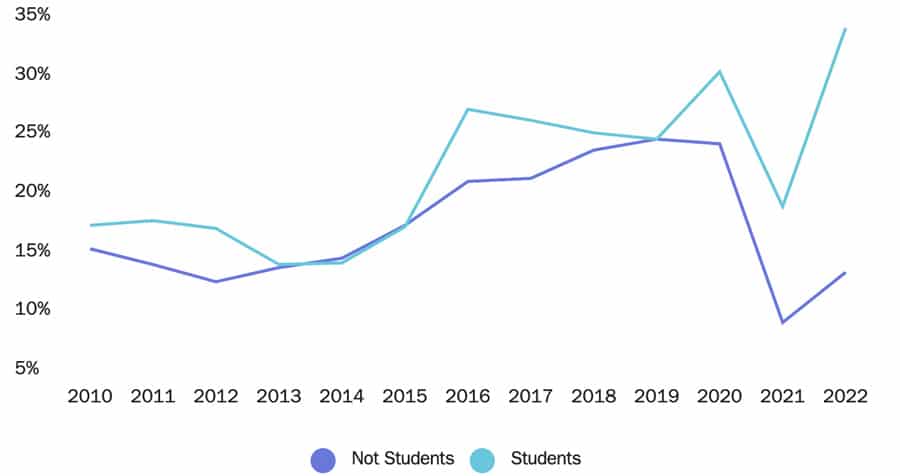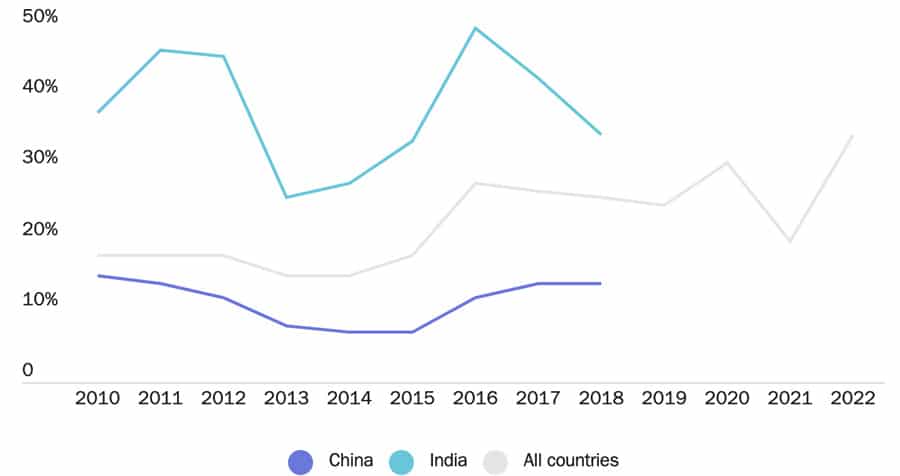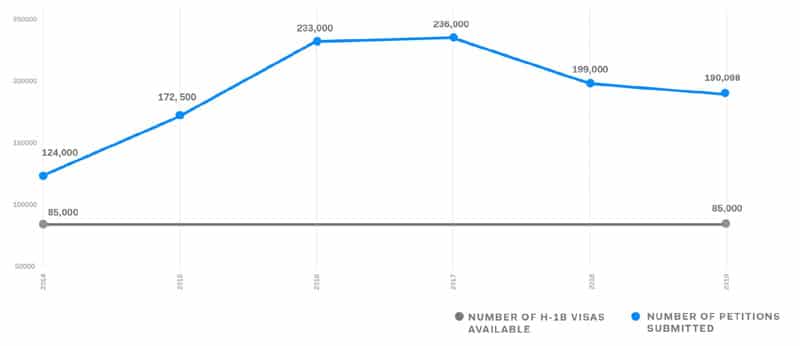US reports a significant spike in student visa refusals for 2022
- The US rejected 35% of all F-1 student visa applications in 2022
- This represents a significant increase in rejection rates compared to previous years
- Rejections rates for Indian students are higher than average, suggesting that the surging applicant numbers from India play a part in shaping that overall trend
New data indicates that the US Department of State rejected 35% of applications last year for F-1 student visas. This is both a notable increase in the overall refusal rate for F-1 applicants, and also considerably higher than the average rate for other non-immigrant visa classes.

In concrete terms, that amounts to 220,676 applications denied out of a total of 631,807 applications – meaning in turn that more than 411,000 F-1 visas were granted to incoming students in 2022.
"It is important to understand that before a student can even apply for a visa they must already be accepted into a government‐approved university," says the Cato Institute's Associate Director for Immigration Studies, David Bier. "This means that the US Department of State turned down 220,676 students who would have likely paid roughly $30,000 per year or US$6.6 billion per year in tuition and living expenses. Over four years, that number rises to US$26.4 billion in lost economic benefits to the United States."
The reasons behind the higher refusal rates are not clear but it appears that the shifting mix of the United States' foreign student enrolment has played a part. Visa applications from Indian students have surged in recent years, and Mr Bier has also noted that rejection rates for Indian applicants are considerably higher than they are for applicants from China, the traditional leading source of students for the US.

That higher refusal rate for Indian applicants does not appear to be based in any difference of policy, but rather on how US consular officials assess the study plans of Indian students. To illustrate this point, Mr Bier quotes the US head of consular affairs Don Heflin, who explained in a 2022 interview that students should:
"Bring [bank statements] just in case the vice consul asks, but we are looking at this less than we used to. We know Indian families usually find a way [to pay].… Mostly it’s about explaining why this school and this curriculum makes sense to you. It’s what in American English we call the Elevator Pitch. You’ll have a minute and a half to tell us why this [school] makes sense to you. Don’t walk up and recite something from memory about the campus, the student body, and how old the school is.… Listen, I have a lot of Indian friends. I know that your father may have told you where you were going to go to school and what you were going to study. That’s fine. Tell us what he told you. Show us that it makes sense for you."
If that is indeed an accurate reflection of the consular approach in India, it could certainly account for the higher rejection rates for Indian students.
However, it also speaks to a larger issue in the US in terms of the linkages between student visa policy and the larger economic and labour market requirements of the United States.
Another recent report from FWD.us, a US advocacy group concerned with immigration reform, points out that there are 7.5 million unfilled jobs in the US, and that new immigrants (including students) are a critically important talent pool for the US economy. It also argues that the existing pathways by which foreign graduates can go on to work and perhaps settle in the US, including Optional Practical Training and the H-1B work visa, are considerably overextended.
"The United States has come to rely on the temporary H-1B work visa as its main—and sometimes only—high-skilled immigration policy tool," notes the report. "This over-reliance on the H-1B visa program creates choke points in our talent pipeline where skilled individuals either cannot move forward or simply choose to leave. Since 1997, the full H-1B visa cap has been exhausted every year prior to the end of the fiscal year…Simply put, there is a profoundly higher demand for these skilled workers than the current law is able to supply."

The paper goes on to argue for reforms to the US immigration system, including that:
- H-1B visa caps be linked to employer demand
- Class(es) of employment-related visas be expanded to "provide realistic
alternatives to H-1B for employers who want to sponsor skilled immigrants for
permanent residency" - An expedited path to citizenship be established for foreign graduates and entrepreneurs
"The United States already has some of the greatest talent on earth; the challenge now is keeping them here," concludes the report. "That will require developing new immigration programs for foreign-born startup founders, graduates of US universities, and high-skilled workers and their families."
For additional background, please see:















